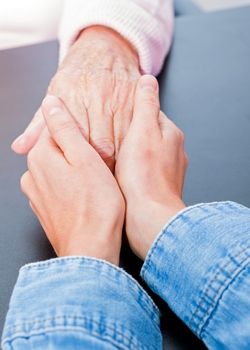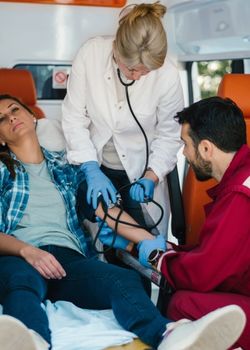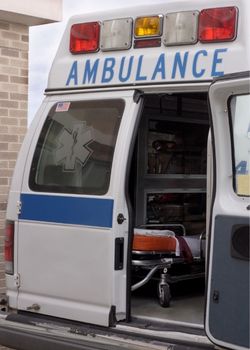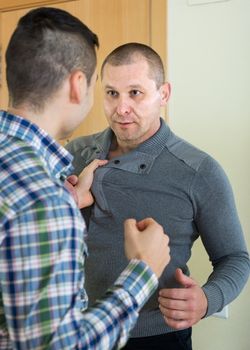 Let’s take a quick trip back to the 1990s. That’s when it all started.
Let’s take a quick trip back to the 1990s. That’s when it all started.
Opioid prescription numbers were beginning to climb. And they didn’t slow down. Over the next two decades more and more doctors filled their prescription pads with painkillers.
By 2012, opioids were being dispensed at a rate of 81.3 prescriptions per 100 people. That year, doctors wrote more than 225 million opioid prescriptions.
By then, we were seeing alarming numbers of overdose deaths. We were in the middle of an opioid epidemic. We realized something needed to change.
And something did.
Doctors and officials saw the numbers climbing. They increased awareness and put new policies in place. The rate started to decline. From 2012 to 2020, it continued to drop. By 2020, the opioid dispensing rate was the lowest it had been during that time period, at 43.3 prescriptions per 100 persons. This made a total of 142 million prescriptions that year.
As opioid prescribing falls, where does that leave us?
So…Where Are We Now?
 The latest numbers show the rate is still dropping – but not evenly. A recent study by RAND Corp. found that opioid prescriptions dispensed by pharmacies declined by 21 percent from 2008 to 2018.
The latest numbers show the rate is still dropping – but not evenly. A recent study by RAND Corp. found that opioid prescriptions dispensed by pharmacies declined by 21 percent from 2008 to 2018.
And the American Medical Association (AMA) reports that opioid prescribing nationwide has dropped a total of 44.4 percent in the years 2011 to 2020. This includes a 6.9 percent drop from 2019 to 2020.
If we’re hoping to turn the tide on the opioid epidemic, this means we’re on the right track – right? Maybe so. But the RAND study also discovered that these decreases have some interesting trends.
The rates aren’t dropping evenly across the nation. They noticed variances based on:
- The types of prescribers
- The types of patients
- The geographic area
Bradley D. Stein, PhD, MD, MPH, a senior physician researcher, admitted:
“The findings do not provide concrete answers about how much of the unnecessary prescribing of opioids has been eliminated. But…there is a lot more nuance in the changes in opioid prescribing than we previously understood.”
“There is a lot more nuance in the changes in opioid prescribing than we previously understood.”
Here are some of the nuances researchers discovered:
- The volume of MME (morphine milligram equivalents) prescribed per capita declined the most in metropolitan counties and in counties with higher rates of fatal opioid overdoses.
- In some states, MME volume increased in multiple counties.
- In other states, some counties saw increased prescribing while other counties had decreases – and sometimes these counties were right next to each other.
- The greatest reductions seen in clinical specialties were among adult primary care physicians (a 40 percent decline).
- The biggest drop in opioid prescriptions written was among emergency physicians (a whopping 71 percent).
The CDC also reports that the 2020 numbers show dispensing rates remain high in certain areas. They found that in 3.6 percent of US counties there were enough opioid prescriptions dispensed for every person to have one.
And, while the overall rate had dropped to 43.3 prescriptions per 100 people by 2020, some counties still had rates nine times higher than that.
The bottom line: Opioid dispensing rates haven’t dropped everywhere. The numbers vary widely across the country. And some hotspots don’t seem to be slowing down.
As Opioid Prescribing Falls, What Does All This Mean?
 The overall decrease seems to suggest things are headed in a positive direction. But it’s clear that some areas and populations remain at higher risk. And the AMA makes an important point about this.
The overall decrease seems to suggest things are headed in a positive direction. But it’s clear that some areas and populations remain at higher risk. And the AMA makes an important point about this.
Even with the decreased prescription rate, the nation’s overdose and death epidemic continues to worsen. In the 12-month period ending April 2021, there were 75,673 overdose deaths from opioids – up roughly 35 percent from the year before.
AMA President Gerald E. Harmon, MD noted:
“The nation’s drug overdose and death epidemic has never just been about prescription opioids. Physicians have become more cautious about prescribing opioids, are trained to treat opioid use disorder and support evidence-based harm reduction strategies. We use Prescription Drug Monitoring Programs as a tool, but they are not a panacea. Patients need policymakers, health insurance plans, national pharmacy chains and other stakeholders to change their focus and help us remove barriers to evidence-based care.”
“Physicians have become more cautious about prescribing opioids, are trained to treat opioid use disorder and support evidence-based harm reduction strategies. ”
“The medical community will continue to play its part,” he added. “And overall, the focus of our national efforts must shift. Until further action is taken, we are doing a great injustice to our patients with pain, those with a mental illness, and those with a substance use disorder.”
As opioid prescribing falls, there’s still so much work to be done.
For information about treatment options for you or a loved one, call 800-934-1582(Sponsored) today.
Images Courtesy of Canva.

Did you know?
- IV drug use puts people at a much higher risk of overdose.
- People who inject drugs are at a higher risk of HIV, tuberculosis, and viral hepatitis.
- IV drug use increases the risk of addiction and the need for individualized treatment.
Why the danger? What makes IV drug use so hazardous? And why is it that—despite the researched dangers—an estimated 11 million people worldwide inject drugs?
Why is IV Drug Use Different?
During IV drug use, a syringe is used to inject a substance directly into the bloodstream. This method bypasses the body’s protective systems. The kidneys, liver, and digestive tract are all designed to dilute and metabolize substances as they pass through. But they can’t do their job if substances go around them.
While this might sound appealing to someone looking for a “bigger” high, it comes with an even bigger risk: overdose.
Which Drugs Are Commonly Injected?
 Heroin is the most commonly injected drug. Others include:
Heroin is the most commonly injected drug. Others include:
- Amphetamines
- Buprenorphine
- Barbiturates
- Benzodiazepines
- Cocaine
- Methamphetamine
- Opioid painkillers
7 Common Dangers of IV Drug Use
All of the drugs mentioned above pose extreme danger when injected and can lead to fatal overdose. But the risks don’t end there.
Let’s take a look at some of the dangers often associated with IV drug use.
Addiction
IV drug use increases the risk of developing physical and psychological addiction.
- Physical Dependence: Tolerance occurs when the body becomes dependent on a drug; you have to take more and more of that substance to achieve the same effects.
- Psychological Dependence: Feeling like you can’t normally function without the use of a drug is a common symptom of psychological dependency. You experience withdrawal symptoms when you stop using it or use less.
- Addiction: While dependence and tolerance are both unique, they often contribute to the development of addiction.
Wound Botulism
The illness wound botulism is caused by a germ that can get into the skin during IV drug use. This toxin attacks the body’s nerves. It causes breathing difficulties and muscle weakness. If wound botulism isn’t treated properly, it can cause death.
This germ can contaminate drugs when they’re produced, transported, or cut with other substances. Drugs contaminated with botulism don’t look any different than non-contaminated ones. And cooking the drug won’t kill the germ.
Once it enters the body, botulism attacks multiple body systems, and the person must receive antitoxin medication to treat it. The antitoxin can stop further damage and prevent death, but it can’t reverse damage already caused by the toxin.
Injection Complications
IV drug use involves injecting a substance into the body through a syringe. If the injection is too deep, it can pierce a vein. If it is too shallow, the drug pools below the skin instead of entering the bloodstream. Either condition can cause serious infections and painful sores.
Collapsed Veins
 Repeated IV drug use causes veins to malfunction and collapse. But by then, the user is addicted. So, to continue using the drug, the person often injects into other parts of the body. This is called injecting intramuscularly (in a muscle) or subcutaneously (under the skin). These types of injections can cause a host of other problems, including:
Repeated IV drug use causes veins to malfunction and collapse. But by then, the user is addicted. So, to continue using the drug, the person often injects into other parts of the body. This is called injecting intramuscularly (in a muscle) or subcutaneously (under the skin). These types of injections can cause a host of other problems, including:
- Necrotizing fasciitis (flesh-eating disease): A severe skin infection that kills tissue. It can result in loss of limbs and death.
- Gas gangrene: An infection that can lead to tissue death and can be fatal.
- Tetanus: This infection can cause neck stiffness, rigidness in the abdomen, lockjaw, and difficulty swallowing.
- Track marks: Acidic drugs (like heroin) cause agitation when injected. The entry site often becomes inflamed, bruises develop, and veins collapse. These visible symptoms on the skin are called “track marks.”
Heart Damage
Any drug injection method can cause heart problems. Specifically, bacteria may find their way to the heart and cause endocarditis (a life-threatening inflammation of the heart). Endocarditis increases the risk of stroke.
Poor Circulation
Injecting drugs damages the veins, which makes blood flow more difficult. This can cause swelling of the legs and feet, painful cramping in the legs, leg weakness, and sores on the legs or feet.
Infectious Disease
IV drug users often use syringes that are not sterile. Examples include reusing needles, sharing needles, or using needles that aren’t intended for intravenous injection.
This can expose the user to infectious diseases, specifically those spread through contact with bodily fluids. This includes HIV, Hepatitis B and C, Tuberculosis, and other blood-borne infections.
In fact, people who inject drugs are “22 times more at risk of HIV compared with the general population.”
How Can You Protect Yourself?
While there is no safe IV drug use, many dangers associated with drug injection can be treated. Some can even be reversed. The best way to avoid these dangers or stop them from progressing is to address the underlying dependence or addiction that leads to chronic misuse of injectable drugs.
If you or someone you know is struggling with IV drug use, help is available. Call 800-934-1582(Sponsored) to learn more about your addiction treatment options.

– Albert W. Henley, Confederate army physician, 1879
In the 1990s, opioid prescriptions soared. Overdose deaths started climbing in 1999. In 2010, the second wave of the epidemic started, with alarming increases in heroin-related overdose deaths. The third wave began in 2013, with a rise in overdose deaths related to synthetic opioids.
And in a recent 12-month period, over 100,000 people died of opioid-related overdose.
These waves of the opioid epidemic take us back over 30 years. But our history of opioid addiction is much older. If we want to trace the history of opioid epidemics in the U.S., we need to go way back. To the Civil War era.
Finding Out Where Your Enemy Is
The Civil War (1861-1865) took the lives of over 700,000 Americans. Ulysses S. Grant, Commanding General of the United States, aptly said:
 Those left behind after the war officially ended faced a new enemy that was harder to spot: opium addiction. The war marked the beginning of the history of opioid addiction in America.
Those left behind after the war officially ended faced a new enemy that was harder to spot: opium addiction. The war marked the beginning of the history of opioid addiction in America.
At the time, medical treatment was a far cry from what it is today. And as the war broke out, opium was central to treatment for soldiers. Soldiers suffered horrible injuries. The softer bullets of the time left jagged wounds and often lodged in bones. Many solders underwent amputation. Tens of thousands were hurt and maimed.
In the unsanitary conditions of battlefield hospitals, many soldiers developed fevers, diarrhea, and bacterial infection.
And what did doctors turn to for the treatment of all of these maladies? Opium. They dispensed it first in powder or pill form.
Historian Jonathan S. Jones reports that opium was viewed as a valuable pharmaceutical “that does so many different things. It was used to kill pain, stop deadly diarrhea, and suppress coughs. Opium was a godsend.”
But then morphine was introduced, which could be given with a syringe, so it was even easier and faster to administer. And once the soldiers were back home, they could easily get opioids from the local store. (Until the early 1900s, opioids weren’t regulated.)
How Freedom Is Lost
-Abraham Lincoln
It is estimated that by 1890, several hundred thousand Americans—a majority of them Civil War veterans—were addicted to opioids. They had made it through the war, but now they faced the battle of addiction.
Jones says “It was epidemic both in scale, just the sheer number of people who got addicted, and also the fact that after the Civil War it becomes … front page news. It becomes a really major public health, and also kind of a cultural, crisis in the post-Civil War decades.”
Jones adds that doctors were previously aware of the risks of opioid use – tolerance with prolonged use and the potential for overdose. “But it was never…front page news…until the Civil War caused the number of cases to just go through the roof.”
While Jones is describing a crisis that happened over 130 years ago, much of his statements about opioid addiction ring as true in the 2020s as they did in the 1890s.
Personal Battles in the History of Opioid Addiction
 Jones has studied the Civil War history of opioid addiction extensively and will be releasing a book on the topic, Opium Slavery: The Civil War Veterans and America’s First Opioid Crisis, in 2023. His research has uncovered many stories like that of Albert W. Henley, a physician in the Confederate army.
Jones has studied the Civil War history of opioid addiction extensively and will be releasing a book on the topic, Opium Slavery: The Civil War Veterans and America’s First Opioid Crisis, in 2023. His research has uncovered many stories like that of Albert W. Henley, a physician in the Confederate army.
Henley was taken prisoner when Vicksburg surrendered to the Union in 1863. Previously, he had contracted typhoid fever, which left him with chronic diarrhea. Other physicians advised him to take opium. He did…and quickly became addicted to the drug.
He tried repeatedly to quit, with no success. “I at length gave up all hopes of emancipating myself [and] gloom and despair haunted my very soul,” he wrote. Henley’s addiction lasted for the next 15 years.
J.M. Richards was a Union doctor who started taking opium in 1867. He had been suffering from diarrhea since the war’s end. But he, too, became addicted to the drug and was unable to stop using it. “I grew wholly unfitted for business” he wrote. “Poverty stared me in the face. My life was a failure, and the gloom and despair I felt were constant and unrelieved.” Richards poured all his resources into morphine or cures for the addiction and eventually tried to take his own life twice.
Like today, the stories go on. So many addicted. So many fighting personal battles with opioids.
Jones noted “In a lot of ways this is the first example in U.S. history of the problem of opioid addiction becoming really epidemic in the true sense of the word.”
If you or a loved one has felt the effect of the current opioid epidemic, help is available today. Call 800-934-1582(Sponsored) now.

“We, the jury, find the defendants…guilty.”
In the first trial of its kind, a jury has found three major pharmacies guilty for their roles in fueling the opioid epidemic.
Pharmacies Take Their Chances With a Jury
The case is just one among more than 3,000 opioid lawsuits that have been filed across the country against various pharmacies, distributors, and manufacturers.
 In many cases, the defendants have chosen to settle outside of court, paying significant settlements to counties and states.
In many cases, the defendants have chosen to settle outside of court, paying significant settlements to counties and states.
But in this case, CVS, Walmart, and Walgreen’s pharmacies decided to take their chances with a jury. They took the case to trial, despite the fact they were urged by the judge to settle.
And they lost.
The amount all three pharmacies must pay has not yet been determined. U.S. District Judge Dan Polster will get to decide what the companies owe for posing a “public nuisance” in Ohio’s Trumbull and Lake counties.
Meanwhile, the case’s outcome may provide leverage for other local and state governments who filed cases against pharmacies or plan to file in the future.
What Crimes Did The Pharmacies Commit?
Between 2012 and 2016, around 80 million prescription painkillers were dispensed in Trumbull county. Another 61 million were distributed in Lake County during that same time. That’s enough to give each resident 400 pills.
Trumbull and Lake county attorneys claimed the three pharmacies should have done more to stop this flood of pills, which led to hundreds of overdose deaths and cost each county around $1 billion.
The attorneys pointed out that the companies should have hired more pharmacists and technicians or provided better training. They said the pharmacies failed “to implement systems that could flag suspicious orders.”
As a result, the attorneys argued, the pharmacies failed to confirm that each prescription was valid – which allowed an abundance of addictive drugs to flood their counties.
The jury sided with these arguments. After six days of deliberations, they returned with a guilty verdict, determining that the pharmacy chains did indeed create a public nuisance, and their actions resulted in “an oversupply of addictive pain pills and the diversion of those opioids to the black market.”
Pharmacies Claim “Not Guilty”
On the other side of the courtroom, attorneys for the pharmacies denied these allegations.
 Pharmacy operators claimed they did take steps to prevent the diversion of pills. They pointed to policies designed to stop pill disbursement when a pharmacist has a concern.
Pharmacy operators claimed they did take steps to prevent the diversion of pills. They pointed to policies designed to stop pill disbursement when a pharmacist has a concern.
Pharmacists are to notify the authorities when they receive suspicious orders from doctors.
The pharmacies pointed fingers at doctors, drug traffickers, and regulators. They pointed out that it was doctors who controlled the number of pills that were prescribed and whether they were prescribed for legitimate reasons.
Walgreens spokesperson Fraser Engerman noted:
“As we have said throughout this process, we never manufactured or marketed opioids nor did we distribute them to the ‘pill mills’ and internet pharmacies that fueled this crisis. The plaintiffs’ attempt to resolve the opioid crisis with an unprecedented expansion of public nuisance law is misguided and unsustainable.”
Will the Guilty Verdict Stick?
The jury sided with the Ohio counties, but it remains to be seen if the verdict will stick. The three pharmacies said they plan to appeal the verdict. They argue that it’s a misapplication of the “public nuisance” law and doesn’t fit the facts.
California and Oklahoma recently decided in favor of pharmaceutical companies involved in similar cases. And, in November, Oklahoma overturned a $465 million judgment against Johnson & Johnson.
So it’s possible that CVS, Walgreens, and Walmart may succeed in appealing this ruling.
And Still the Opioid Epidemic Rages On
Meanwhile, the verdict doesn’t seem to be affecting business at the three pharmacies. Their stock prices fell briefly, but rebounded quickly after the jury’s decision.
CVS and Walgreens remain the top two pharmacies in the U.S. based on the number of stores (nearly 10,000 for CVS and nearly 9,000 for Walgreens).
And Walmart has the #1 slot on the list of top 100 retailers 2021 based on sales, which totaled over $543 billion in 2020.
If you or someone you love is experiencing a substance use disorder, help is available. Call 800-934-1582(Sponsored) today.

I was watching a crime drama on TV the other day. The cops were able to identify a drug user because she kept sniffing when they interviewed her.
But then I did a little digging. And as it turns out, drug use causes far more damage than a case of the sniffles. It can really wreak havoc on your nose.
If that woman really did snort drugs long-term, she would’ve had some serious symptoms that go way beyond a runny nose.
Here’s a breakdown of how drugs can damage your nose.
Membrane Damage: Stuffy Nose & Nosebleeds
 Inside your nose, you’ll find a mucous membrane lining that covers the entire interior.
Inside your nose, you’ll find a mucous membrane lining that covers the entire interior.
The point of this lining is to warm and humidify the air you inhale. The lining also helps to trap the debris and pathogens lingering around in that air, preventing them from entering your body and causing illness.
But snorting drugs (like OxyContin, heroin, cocaine, meth, etc.) damages the lining and decreases blood flow in the nose. The damage causes blockage in your airways, which results in a stuffy nose. The reduced blood flow also causes blood vessels to shrink and burst, which results in nosebleeds.
Deviated Septum: Breathing Problems & Infections
Over time, repeated damage to the mucous lining and the cartilage in your nose begins to affect the septum (the part that divides your nose into two nostrils). This damage causes the septum to become uneven or misaligned. This is referred to as a deviated septum.
A deviated septum can cause a host of problems. The most common issues are congestion and breathing problems. But this damage can also cause sleeping problems, headaches, pain in the face, snoring, and frequent sinus infections.
Perforated Septum: Nose Decay & Death
With long-term use, drugs that are snorted continue to eat away at the septum. Eventually, the damage goes beyond simply misshaping the septum to killing it. As the cells die off, a hole forms. This is called a perforated (punctured) septum.
A perforated septum can cause your nose to feel blocked, can cause whistling or wheezing in the nose, and can result in headaches, nosebleeds, nose pain, and scabbing inside your nose.
Palate Damage: Swallowing Issues
 Here’s where the damage moves beyond your nose. With long-term drug abuse, the substances can start to damage the roof of your mouth (the hard palate).
Here’s where the damage moves beyond your nose. With long-term drug abuse, the substances can start to damage the roof of your mouth (the hard palate).
Your palate is located right next to your nose, and the reduced blood flow and irritation of the nasal passages eventually spreads here. The damage eats away at the bone cells, causing a hole to form in the top of your mouth.
When this happens, you’ll have difficulty swallowing, food may come out of your nose when you eat or drink, and you may develop a nasally voice.
Saddle Nose: Permanent Disfiguring
And now we’ve come to the point where the damage has become very visible. Repeated damage to the septum can eventually weaken it so much that the nose collapses.
Your nose looks wider and flatter. The middle of your nose is no longer be supported by the septum, so it has a saddle-shaped depression in the middle (a “saddle nose”).
Warning Signs Your Nose is Damaged By Drugs
The good news is that some of these issues will go away if drug use stops. Others are more severe and can cause permanent damage. Saddle nose, for instance, will require surgery to repair your nose.
But who wants to get to that point?
Watch for the following warning signs that drug use is causing damage to your nose. (Or look for these signs if you suspect a loved one is struggling with a drug addiction. Like the detectives in that crime show, you can use these clues to spot drug use.)
- Nasal pain
- Loss of smell
- Nose bleeds
- Frequent sinus infections
- Whistling noises in the nose when breathing
Don’t Let Drugs Damage Your Nose Permanently
Don’t wait around and let your nose damage become severe. It can happen quickly.
The hard truth is a stuffy nose can turn into a deviated septum in no time. And it will only get worse. The only way to stop this damage is to stop drug use. How? Learn more about treatment here.
If you or someone you love is experiencing a substance use disorder, help is available. Call 800-934-1582(Sponsored) today.

69,710.
That’s the number of people who died from opioid overdose in the U.S. in 2020. That’s up nearly 30 percent from the year before. And many expect those numbers to continue rising.
And why wouldn’t they? As we see more and more drugs laced with deadly doses of fentanyl, overdoses are becoming more and more likely. What’s the solution? Better interventions? More awareness? Fewer prescriptions? Policy makers, law enforcement, and health officials are looking into these options and many more.
Meanwhile, one group suggests going with a solution that’s less mainstream. In fact, it’s less…legal. (At least for now.) Enter the Safe Supply movement.
Introducing the Safe Supply Movement
The Drug User Liberation Front (DULF) took to the dark web and introduced their own solution: Safe Supply. DULF hopes policies change in the future and they can garner support off the dark web. For now, they’ll take what they can get.
 DULF founders Jeremy Kalicum and Eris Nyx seek to provide drug users with the drugs they want – but with less risk of overdose. How? By purchasing the drugs and testing them before they are passed on.
DULF founders Jeremy Kalicum and Eris Nyx seek to provide drug users with the drugs they want – but with less risk of overdose. How? By purchasing the drugs and testing them before they are passed on.
With fentanyl showing up in opioids, cocaine, and meth these days, DULF founders hope to intercept these deadly drugs before they hit the streets and ultimately provide a “safe supply” for users.
With overdose numbers climbing, the founders upped their game over the past two years. Last year, they staged their first protest, demanding a “safe supply” of drugs.
And in April of this year, they distributed pre-tested heroin in downtown Vancouver. And this past July, in what was likely their boldest move yet, DULF distributed drugs in front of Vancouver police HQ.
What’s in the Bag?
Nyx and Kalicum point out that no one really knows what they’re getting their hands on when they buy drugs in unmarked bags. Dealers could be giving them anything – and they often are. With just a few surprise milligrams of fentanyl in the mix, the user easily becomes another overdose statistic.
So, DULF founders hope to follow the same model as alcohol and cigarette distributors. They want to test the ingredients and label the substances clearly. They’d test street drugs and distribute them in packaging that clearly states what’s inside. Clients and groups could get their supply from DULF at protest events.
Kalicum admits that purchasing the drugs is a lot like buying anything else online – but you’re not using eBay or Amazon. He buys drugs on the dark web.
Kalicum admits that purchasing the drugs is a lot like buying anything else online – but you’re not using eBay or Amazon. He buys drugs on the dark web, a virtually unregulated sector of the Internet that offers sites where people can buy drugs and even leave reviews for the vendors. If Kalicum gets fentanyl when he is supposed to get heroin, he can dispute the purchase and ask for a refund (and has done so).
Of course, Kalicum admits, he might be purchasing from a criminal organization and further funding their illicit efforts. “But, we’re forced to leverage the resources that we have access to,” Kalicum argues.
Kalicum uses an allegedly untraceable cryptocurrency for the purchases, then he tests the drugs using FTIR spectroscopy. This technology reveals what is in the substance using infrared light. Then, Nyx makes labels for the Safe Supply drugs and tracks data on the substances they distribute.
What’s Next for the Safe Supply Movement?
 Kalicum notes they would prefer to use drugs provided by the government rather than illicit markets. He hopes other drugs become regulated, much like methadone is now. He and other DULF supporters are making efforts to implement a “safe supply” model and bring Canadian health officials onboard.
Kalicum notes they would prefer to use drugs provided by the government rather than illicit markets. He hopes other drugs become regulated, much like methadone is now. He and other DULF supporters are making efforts to implement a “safe supply” model and bring Canadian health officials onboard.
In August, DULF founders submitted a request for exemption to current policies so they could practice their “safe supply” model – due to the “health emergency” of the opioid crisis.
And the duo is actually gaining some official support. Vancouver Coastal Health, a regional health authority, gave DULF a letter of support for its plan. Some Canadian policy experts have also agreed to support DULF’s safe supply efforts.
In October, the Vancouver City Council voted to support DULF’s efforts, but only if they purchase the drugs legally. This will require cooperation from other organizations, such as Fair Price Pharma, to provide the supply.
Nyx and Kalicum see a long road ahead, but they continue to push the “safe supply” movement. Nyx noted in an interview, “We have a colossal amount of work to do. People are constantly dying, and there is no end in sight.”
If you or someone you love is experiencing a substance use disorder, help is available. Call 800-934-1582(Sponsored) today.

The Attorney General in Alabama has designated a good chunk of its opioid crisis settlement money go towards an impressive cause.
In a series of attempts to right the wrongs that opioids caused the state, Alabama will allocate $1.5 million of their McKinsey & Company settlement to the Department of Child Abuse and Neglect Prevention. Additional funding will be allotted to several more critical law enforcement departments.
Opioid Settlement Money From McKinsey & Company
Earlier this year, The New York Times reported the consulting firm McKinsey & Company agreed to pay nearly $600 million to settle investigations into their role in increasing opioid sales. One of the drug companies it gave sales advice to was Purdue Pharma, the manufacturer of the highly addictive drug OxyContin.
 McKinsey reportedly wrote a report for Purdue executives highlighting how their new marketing tactics could increase sales of highly addictive OxyContin by $200 to $400 million annually. The report included a suggestion that opioids are useful in reducing stress, making patients feel optimistic, and helping them feel less isolated. One might argue that’s the complete opposite of how opioid addiction presents – constant cravings, discontent, isolation, and symptoms of physical dependence.
McKinsey reportedly wrote a report for Purdue executives highlighting how their new marketing tactics could increase sales of highly addictive OxyContin by $200 to $400 million annually. The report included a suggestion that opioids are useful in reducing stress, making patients feel optimistic, and helping them feel less isolated. One might argue that’s the complete opposite of how opioid addiction presents – constant cravings, discontent, isolation, and symptoms of physical dependence.
Purdue Pharma was also found to be at serious fault in the opioid crisis by knowingly putting the well-being of millions of Americans at risk by marketing and selling opioids that it knew were dangerous. It was also alleged that the company had reason to believe some of the providers were diverting the drugs to people who were abusing them. In November last year, Purdue pleaded guilty to fraud and kickback conspiracies.
Purdue agreed to an $8.3 billion settlement and plead guilty to criminal charges for its role in fueling the opioid crisis. McKinsey & Company agreed to a nearly $600 million settlement in order to end investigations into their role in helping Purdue “turbocharge” its opioid sales.
Alabama Isn’t Wasting Its Opioid Settlement Money
Alabama sued McKinsey for their role in increasing opioid sales and were awarded $9 million, $7.6 million of which is due to be paid in 2021. (Alabama also has several other pending lawsuits against opioid manufacturers.)
In a series of statements, the Alabama Attorney General announced the state would be awarding millions of dollars to the Alabama Department of Child Abuse and Prevention (ADCANP), their forensic lab, and specialty courts.
Alabama’s settlement with McKinsey & Company was the first multistate opioid settlement to address the crisis, totaling $9 million.
Here’s a breakdown of all three monetary awards:
#1 Opioids and Child Abuse
Official data suggests that a large percentage of children enter foster care in Alabama due to substance use. Child neglect accounts for 60 percent of child removal from their homes.
Speaking about this intervention, the Marshall stated:
“The Alabama Department of Child Abuse Neglect and Prevention is a small state agency with a critical mission – strengthening families. I firmly believe that strong families are the answer to nearly every societal ill that our state is wrestling with, not the least of which is the opioid crisis.”
Marshall went on to say that he believes “…children are the invisible victims of the opioid epidemic.”
#2 Opioid Forensic Testing
The settlement awarded to Alabama’s forensic lab, which serves all 450 enforcement agencies in the state, is intended to improve the quality and turnaround of forensic services for opioid-related cases.
“Our state forensics lab, like so many across the country, has been battling backlogs caused by the opioid epidemic. This investment in new technology will give ADFS the tools they need to quickly identify trends in increasingly complex synthetic opioids and to aid law enforcement in identifying opioid traffickers,” Marshall said.
#3 Specialty Courts
 The Attorney General awarded the Office of Prosecution Services and officers from the Alabama District Attorneys Association $1.5 million to invest in specialty courts, including drug courts, veterans’ courts, and mental health courts.
The Attorney General awarded the Office of Prosecution Services and officers from the Alabama District Attorneys Association $1.5 million to invest in specialty courts, including drug courts, veterans’ courts, and mental health courts.
Specialty courts, as they suggest, have a specific criminal justice reform role: treating offenders whose crime is related to substance use disorder and reducing recidivism. Attorney General Marshall believes that investing in drug courts is a way of relieving the strain of the opioid epidemic placed on their District Attorney’s offices and court systems.
Speaking about this investment on behalf of the District Attorney’s Association, DA Michael Jackson spoke of its potential value:
“Drug courts and pretrial diversion programs are an extremely valuable tool – not only can this type of intervention save the lives of addicted offenders, but these programs also help decrease victimization within communities.”
More Opioid Settlement Money on the Horizon?
And it isn’t over yet. Alabama is still set for trials with other pharmaceutical companies, including Endo Pharmaceuticals and McKesson Corporation. It also has pending litigation against opioid manufacturers Purdue Pharma, Mallinckrodt, and Insys.
If you or someone you love is experiencing a substance use disorder, help is available. Call 800-934-1582(Sponsored) today.

“I just need a way out of my head. I’ll do anything for a way out of my head.”
These are the lyrics from Mac Miller’s platinum track “Come Back To Earth.” The song’s album, Swimming, achieved platinum status in February of 2021 – two and a half years after the rapper’s death.
It was Miller’s first album to go platinum.
Why didn’t Miller live to see his own success? Because on September 4, 2018, he was given counterfeit oxycodone pills. The drugs contained fentanyl, which is deadly in even the smallest doses.
Apparently unaware of the fentanyl laced into of the pills, Miller overdosed three days later. He died on September 7 from what the coroner labeled “mixed drug toxicity” – a combination of fentanyl, alcohol, and cocaine.
He was just 26 years old.
Dealer Knowingly Provided Pills Laced With Fentanyl
 Fast forward to October 2021. Miller’s songs are going double platinum, and the dealer who supplied the fentanyl-laced drugs has pled guilty of the crime. The dealer, Stephen Andrew Walter, now faces up to 20 years in prison and a fine of up to $1 million.
Fast forward to October 2021. Miller’s songs are going double platinum, and the dealer who supplied the fentanyl-laced drugs has pled guilty of the crime. The dealer, Stephen Andrew Walter, now faces up to 20 years in prison and a fine of up to $1 million.
What happened, exactly?
According to the plea, Walter told a drug runner to give counterfeit oxycodone pills containing fentanyl to Miller’s dealer, who then provided them to Miller.
Walter admits he knew the pills “contained fentanyl or some other federally controlled substance.”
The plea also notes that, if it weren’t for the fentanyl in the pills, Miller would not have died from an overdose. But, because Walter supplied the laced drugs, Miller suffered a fatal overdose three days after receiving them.
Walter’s plea is guilty to one count of distributing fentanyl. The dealer and runner have also been charged.
Mac Miller’s Struggle With Opioid Addiction
Mac Miller, born Malcolm James McCormick, released five rap albums before his death. He was open about his struggle with sobriety, and his lyrics frequently referenced substance abuse.
Just four months before his fatal overdose, Miller crashed into a light pole while driving under the influence. Miller reported that the experience changed his perspective on life. But it clearly didn’t push him to total sobriety.
“I would just tell myself to worry a little less and…don’t create all of this weight for things. Everything has so much weight, but it’s all just chapters. It’s all just pieces of the story. There’s gonna be a next part.”
Miller was preparing to take his newest album, Swimming, on tour when the fentanyl-laced drugs landed in his hands. In one of his last interviews before the overdose, the rapper noted, “There’s pressure. A lot of times in my life I’ve put this pressure to hold myself to the standard of being whatever I thought I was supposed to be, or how I was supposed to be perceived. And that creates pressure.”
When asked what he would tell his younger self, Miller replied, “I would just tell myself to worry a little less and…don’t create all of this weight for things. Everything has so much weight, but it’s all just chapters. It’s all just pieces of the story. There’s gonna be a next part.”
Too Many Americans Never Made It to the Next Chapter
Miller was just one of nearly 30,000 people who died of opioid-related overdoses in 2018. The next year, the total jumped to 50,000.
 This year, drug enforcement agencies are reporting unprecedented amounts of fentanyl in the drugs they confiscate. And stress from the ongoing pandemic seems to be escalating the crisis.
This year, drug enforcement agencies are reporting unprecedented amounts of fentanyl in the drugs they confiscate. And stress from the ongoing pandemic seems to be escalating the crisis.
Between May 2019 and May 2020, there were over 81,000 drug overdose deaths in the U.S. That’s a record-breaker for any 12-month period, according to the CDC.
What’s next? Will we see the numbers continue to rise? Will we find new solutions to reach people and prevent future deaths like Mac Miller’s?
We’ll let his words speak for themselves:
“Somehow we gotta find a way
No matter how many miles it takes
I know it feels so good right now
But it all come fallin’ down.”
Get help today at 800-934-1582(Sponsored) to learn about treatment programs for drug and alcohol addiction.

Darknet fentanyl. A 10-month investigation across three continents. Dozens of law enforcement agencies. This was no small operation.
And it paid off.
After careful coordination among nine countries, operation “Dark HunTor” took 500 pounds of illicit drugs off the market – along with $32 million in cash and 45 firearms.
The far-reaching drug enforcement operation was designed to send a message to people peddling illegal drugs: “There is no dark internet.”
No More Hiding in the Dark for Darknet Fentanyl
The dark web has become a playground for online peddling of pills laced with fentanyl.
 Dealers have found new ways to push drugs, post their offerings, and package them like any other online purchase.
Dealers have found new ways to push drugs, post their offerings, and package them like any other online purchase.
“Today, we face new and increasingly dangerous threats as drug traffickers expand into the digital world and use the Darknet to sell dangerous drugs like fentanyl,” noted Administrator Ann Milgram of the Drug Enforcement Administration (DEA).
When researchers interviewed dealers on the dark web, they discovered that it has (seemingly) offered a “safe” space for illegal sales, attracting new criminals and illegal “entrepreneurs.”
One respondent admitted, “I hadn’t ever thought about selling drugs in any capacity because I dislike violence… I was always too scared and slightly nerdy to do that and never really contemplated it seriously until the dark web.”
Another boasted, “Selling offline is borderline stupid. You can make so much more money online, the risks [in selling outside cryptomarkets] aren’t even remotely worth it.”
Finally Holding Internet Criminals Accountable
This recent operation led to a staggering 150 arrests – so far. Jean-Philippe Lecouffe, deputy director of operations for Europol, reports that the investigation is ongoing, and will likely lead to even more arrests. He noted, “Each time we arrest people, each time we search a house, we find new leads.”
Law enforcement officials want to make it clear that dealers can’t hide behind the dark net.
Lecouffe explained, “The point of operations such as the one today is to put criminals operating on the dark web on notice: the law enforcement community has the means and global partnerships to unmask them and hold them accountable for their illegal activities, even in areas of the dark web.”
Assistant Attorney General Kenneth A. Polite Jr. of the Justice Department’s Criminal Division also noted, “The men and women of the department’s Criminal Division, in close collaboration with our team of interagency and international partners, stand ready to leverage all our resources to protect our communities through the pursuit of those who profit from opioid addiction, under the false belief that they are anonymous on the Darknet.”
IRS Criminal Investigation Chief Jim Lee added, “The Darknet no longer provides a concealing cloak for criminals to operate.”
Darknet Fentanyl Dealers Busted Around the World
 Operation Dark HunTor included coordinated efforts among agencies in the United States, the United Kingdom, Australia, Bulgaria, France, Germany, Switzerland, the Netherlands, and Italy. The investigation and resulting arrests exposed key players in the illicit online drug market. The 150 arrests included 65 in the U.S., 47 in Germany, and 24 in the United Kingdom.
Operation Dark HunTor included coordinated efforts among agencies in the United States, the United Kingdom, Australia, Bulgaria, France, Germany, Switzerland, the Netherlands, and Italy. The investigation and resulting arrests exposed key players in the illicit online drug market. The 150 arrests included 65 in the U.S., 47 in Germany, and 24 in the United Kingdom.
What kinds of dealings did the operation discover? In Monaco, officials exposed home-bound drug makers who produced deadly-disguised pills. Using special presses, they could create pills that resemble legitimate medication. Another piece of the investigation uncovered operations based in Florida and Rhode Island that “advertised and sold pressed fentanyl pills throughout the United States.” Lecouffe reports that the long list of suspects arrested includes some “long-sought, high-value targets.”
Deputy Attorney General Monaco noted, “Operation Dark HunTor prevented countless lives from being lost to this dangerous trade in illicit and counterfeit drugs, because one pill can kill.” And that’s no exaggeration. Just two milligrams of fentanyl can be fatal. And dealers often lace their drugs with far more than the lethal amount.
“These drug traffickers are flooding the United States with deadly, fake pills, driving the U.S. overdose crisis, spurring violence, and threatening the safety and health of American communities,” said Milgram. “DEA’s message today is clear: criminal drug networks operating on the Darknet, trying to hide from law enforcement, can no longer hide. DEA, the U.S. interagency, and our valued international partners are committed to dismantling drug networks wherever they are, including the Darknet.”
If you or someone you love is experiencing a substance use disorder, help is available. Call 800-934-1582(Sponsored) today.

When does drug use become drug abuse?
What does it look like to cross the line from medication to dependency?
How can you tell if you or a loved one needs help with opioid addiction?
How about we take the guesswork out of it?
Mental health professionals look to the DSM-5 for guidance, and we can too. The Diagnostic and Statistical Manual of Mental Disorders (5th edition) is the ultimate guide for professionals to diagnose mental health disorders. This tool, published by the American Psychological Association (APA), includes over 150 mental disorders, and explains the symptoms, risk factors, and criteria for each.
One of these disorders is opioid use disorder (OUD).
Based on the following 11 symptoms, OUD is diagnosed as mild (2-3 symptoms), moderate (4-5 symptoms) or severe (6 or more symptoms). Watch for two or more of these red flags to know if it’s time for you or a loved one to seek help with opioid addiction.
Recognize These Red Flags for Opioid Addiction?
- Warning sign: Opioids are taken in larger amounts or over a longer period of time than intended.
Steve injured his knee playing football last year. His injury has healed, but he continues to take painkillers “just in case.”
- Warning sign: Multiple attempts have been made to stop taking opioids but with no success in reducing, controlling, or stopping use.
 Rachel swore she was done with the painkillers. She threw the rest of them away, and resolved to get through the rest of the week without taking another one.
Rachel swore she was done with the painkillers. She threw the rest of them away, and resolved to get through the rest of the week without taking another one.
That was last month. Since then, she’s gotten more and has continued to take them every day. She just can’t seem to make it through the day without “a little help.”
- Warning sign: An excessive amount of time is spent obtaining, using, and recovering from the effects of opioids.
Jimmy doesn’t seem to have time for much anymore. He takes fewer shifts at work because he’s often too high or dope sick to work. He spends most of his nights searching online for opioids and arranging his next purchase. It’s like he’s devoting more time to the drugs than the people in his life.
- Warning sign: Cravings to use opioids are persistent.
It’s like hunger or thirst. From the moment I wake up, my body is aching for another hit. And once I use, it doesn’t stop. I start craving more right away.
- Warning sign: Opioid use makes it difficult or impossible to fulfill obligations at home, school, or work.
Natalie used to be the one everyone could count on. But now, she shows up late to work, and she often takes long breaks. She forgets appointments. Her house is a wreck. And she gave up entirely on the class she was taking. All because she’s hooked on prescription pain medication.
- Warning sign: Continued use even though the behavior causes clear social or interpersonal problems.
Bob’s boss threatened to fire him if he ever showed up to work high on drugs again. His girlfriend broke up with him because his drug use ruined their relationship. And his ex-wife threated to take away visitations with their son. But none of that changed Bob’s habits – he had no plans to stop using heroin.
- Warning sign: Participation in social, occupational, or recreational activities stops.
Sue used to be involved in a lot of things, but she didn’t seem interested anymore. She volunteered each month at the food pantry. She went out to dinner with friends on the weekends. She went to classes at the gym. Now, all of that has stopped. She just wants to stay home.
- Warning sign: Using opioids in situations that may not be safe.
No, I don’t know for sure what’s in the drugs I take at parties, but that’s ok. I’ll risk it. I bought some pills the other day from some guy online, and they turned out fine. What’s the big deal?
- Warning sign: Continued use of opioids even though it negatively affects mental or physical health.
 Dave woke up in unfamiliar surroundings. He could tell he was in a hospital, but he didn’t know why?
Dave woke up in unfamiliar surroundings. He could tell he was in a hospital, but he didn’t know why?
His mom quickly came to his bedside and answered his questions. Apparently, he had overdosed last night.
“Well then,” he thought to himself, “I’ll have to be more careful next time with the number of pills I take.”
- Warning sign: A level of tolerance is present to achieve the effects of opioids.
I remember when one pill sent me flying. Now, I have to take several to get that same feeling. It’s getting pretty expensive to keep this up.
- Warning sign: Withdrawal symptoms are experienced when opioid use stops.
Kevin seemed anxious. He was sweating, and he couldn’t sit still. When I asked him what was wrong, he quickly said he was fine. But he seemed nauseated, and his eyes didn’t look right, either. He explained that he had run out of medicine and just needed to get a refill – then he would feel better.
Recognizing It’s Time to Seek Help for Opioid Use Disorder
Opioid addiction is challenging, but remember that effective treatment options exist. If you (or a loved one) are currently using opioids, knowing how to recognize the signs can be life-saving. Don’t wait for OUD to worsen. Help is available now.
If you or someone you love is experiencing a substance use disorder, help is available. Call 800-934-1582(Sponsored) today.
